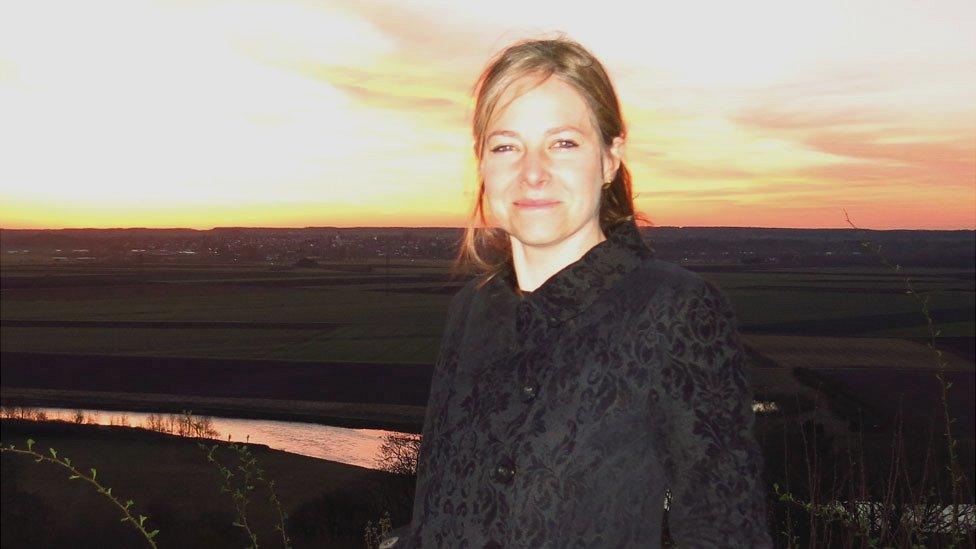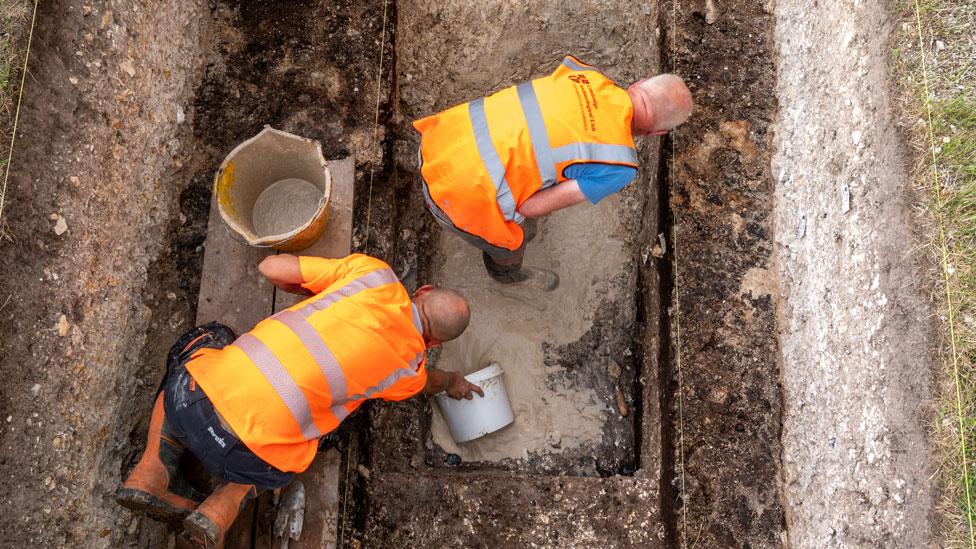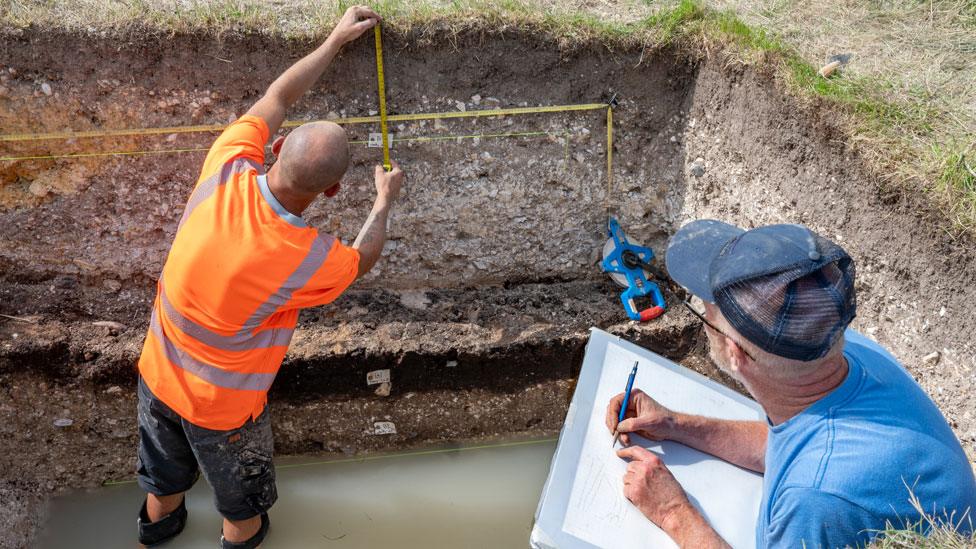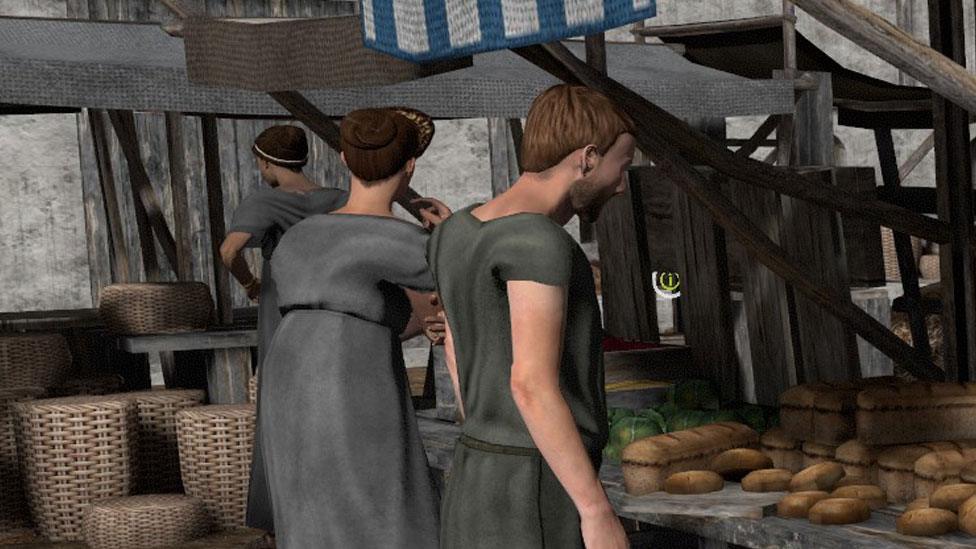Digging for Britain: Iron Age Warham Camp to feature on BBC show
- Published

The hillfort may have been used as a temporary meeting place for political gatherings or for ritual activities
The discovery that an Iron Age hillfort was probably not used as a permanent settlement is to feature on BBC Two's Digging for Britain.
Schoolchildren and volunteers took part in an excavation at Warham Camp in north Norfolk for three weeks during July.
The dig was picked up by the programme, presented by Prof Alice Roberts.
Project director Andrew Hutcheson said: "For the volunteers, having Alice Roberts on site was magical for them."

It was "magical" for the volunteers who took part that Alice Roberts attended the site
Warham Camp, one of Norfolk's few hillforts, dates to between 800BC and AD43 and is about 100m (328ft) in diameter.
The scheduled monument is also a SSSI (Site of Special Scientific Interest, external) and was last excavated in 1959.
A team of archaeologists from the Cambridge Archaeological Unit hoped to establish what activities took place in the hillfort, which is near Wells-next-the-Sea.
Dr Hutcheson, of the University of East Anglia's Sainsbury Institute, said they did not uncover evidence of "significant structures, such as large houses, being built".
He suggested it might have been used for temporary "political gatherings" or there "may also have been a ritual significance" to the site.
He said: "It's exciting to know all that effort went into creating a fort that was maybe just a temporary meeting place."

Twenty-four trenches were dug inside the hillfort, and three others were dug in the inner ditch and the base of the earthwork's banks
This is in contrast to the "developed" hillforts found in southern England, such as Danebury in Hampshire, and Maiden Castle in Dorset, where there is evidence of settlement.
Dr Hutcheson said "we don't have the answers", but it could be that East Anglia lacked the "smaller scale internecine fighting that meant you needed almost permanent residence" in the fort.
More than 3,500 finds were discovered during the excavation, including animal bone, glass and worked flints and 1,405 broken pieces of pottery.
It sheds light on Iron Age Norfolk in the centuries before and during the era of the Iceni tribe, whose queen Boudicca led a failed revolt against the Romans in about AD60.
It also revealed how the fort was back in use in the late 4th Century as a base for Roman metal working, but once again, there was no evidence of any large-scale buildings.

Artistic input from Restoration Trust volunteers through photography, writing and landscape drawing will eventually go on display
Dozens of pupils from the Synergy Multi-Academy Trust and 33 volunteers from the Restoration Trust, external were involved in the community dig, which is part of the Later Prehistoric Norfolk Project, external.
Dr Hutcheson said the volunteers "got a real feeling they were partaking in something important if Digging for Britain takes notice of their work".
Digging for Britain is on BBC Two at 20:00 GMT and on iPlayer.

Follow East of England news on Facebook, external, Instagram, external and X, external. Got a story? Email eastofenglandnews@bbc.co.uk, external or WhatsApp 0800 169 183
- Published20 August 2023

- Published15 October 2022

- Published30 August 2022
